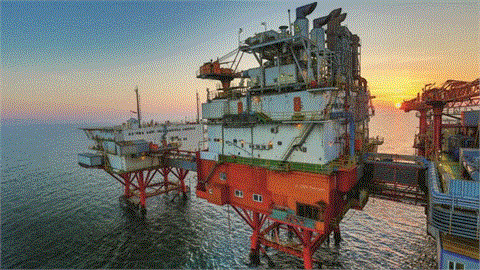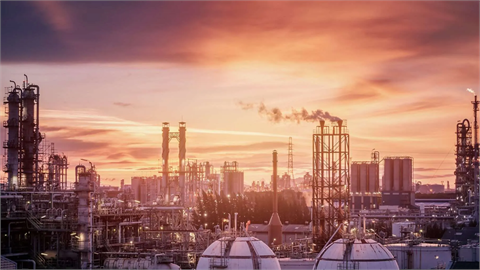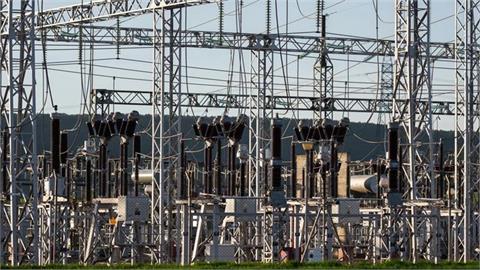Oil will continue as the fuel with the largest share of the global energy mix until 2045, according to the World Oil Outlook 2045 of the Organization of the Petroleum Exporting Countries (OPEC) published on Tuesday.
Oil demand will increase by 13.8 million barrels per day (bpd) to 104.4 million barrels by 2026 and by 17.6 million bpd to 108.2 million bpd in 2045, OPEC forecast.
“Despite decelerating oil demand growth in the second part of the forecast period and strong growth in other energy sources, such as other renewables, gas and nuclear, oil is expected to retain the highest share in the global energy mix during the entire period,” it said.
Oil accounted for 30% of global energy requirements in 2020 but this will gradually decline to 28% by 2045, OPEC said.
Over the medium-term period between 2020 and 2026, almost 80% of this incremental demand will materialize within the first three years, primarily as part of the recovery process from the COVID-19 crisis, according to OPEC.
-Other renewables and natural gas will contribute most to future energy mix
Demand for other renewables is projected to expand from 6.8 million bpd in 2020 to 36.6 million bpd in 2045, representing the single-largest incremental contribution to the future energy mix, according to OPEC.
As the fastest-growing energy source, its share in the global primary energy mix will be above 10% in 2045, up from just 2.5% in 2020. Falling costs and policies focused on reducing emissions are driving this renewables demand.
-Higher oil demand expected in non-OECD countries
Oil demand in OECD countries is predicted to rise by over 4 million bpd, OPEC said. However, this increase alone will not be enough to restore demand levels seen before COVID-19. Over the medium run, non-OECD demand is expected to rise by over 10 million bpd, with roughly half of this growth needed to counteract demand declines in 2020.
In contrast, OPEC said oil demand is set to continue to grow in the non-OECD region driven by an expanding middle class, high population growth rates and stronger economic growth potential. Demand in these countries is expected to increase by 25.5 million bpd between 2020 and 2045 to reach 74.1 million bpd in 2045.
-Road transportation, aviation sectors to lead demand rise
Between 2020 and 2045, the transportation sector is expected to contribute the most to future incremental demand, generating 13 million bpd.
“More than 90% of this increase is projected to come from the road transportation and aviation sectors, each contributing around 6 million bpd,” OPEC said, highlighting that a large part of these increases between 2020 and 2045 is due to the sharp demand decline in these two sectors in 2020.
- Electric vehicles growth to limit long-term oil demand
The total vehicle fleet is expected to reach 2.6 billion by 2045, increasing by around 1.1 billion from the 2020 level, OPEC said, adding that electric vehicles (EVS) are set to approach 500 million by 2045, representing almost 20% of the global fleet.
Some growth is also projected for natural gas vehicles (NGVs), with an expected increase of 80 million projected between 2020 and 2045.
As a result, OPEC said internal combustion engine (ICE) vehicles are set to maintain their leading role in the composition of the global fleet, which is projected to constitute about 76% of the global vehicle population by 2045, largely sustained by the fleet size increase in developing regions.
These developments are expected to keep road transportation oil demand in a narrow range of 46 million bpd to 46.5 million bpd after 2025.
-US tight oil to be key driver of demand growth
Estimated to peak at 15.2 million bpd in the late 2020s, tight oil production in the US is expected to rise from 11.5 million bpd in 2020 to 14.8 million bpd in 2026.
-Some $11.8 trillion oil-related investment required
Cumulative investments in the oil sector of $11.8 trillion are required up to 2045, OPEC said.
“Of this, 80% or $9.2 trillion, is directed towards the upstream, the bulk of which is in North America, as US tight oil, in particular, drives medium-term non-OPEC supply growth. Downstream and midstream investment needs, in order to expand and maintain the associated refinery, storage and pipeline systems required to bring oil to market, necessitate another $1.5 and $1.1 trillion, respectively,” it added.
(Anadolu Agency, September 28, 2021)



